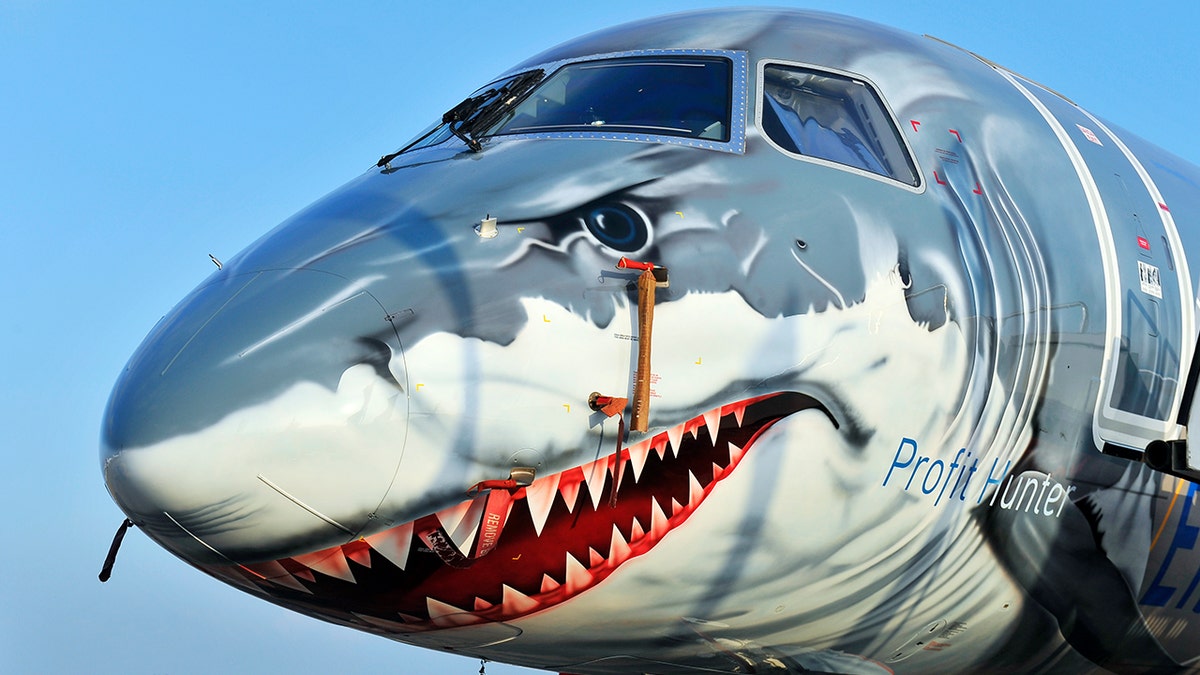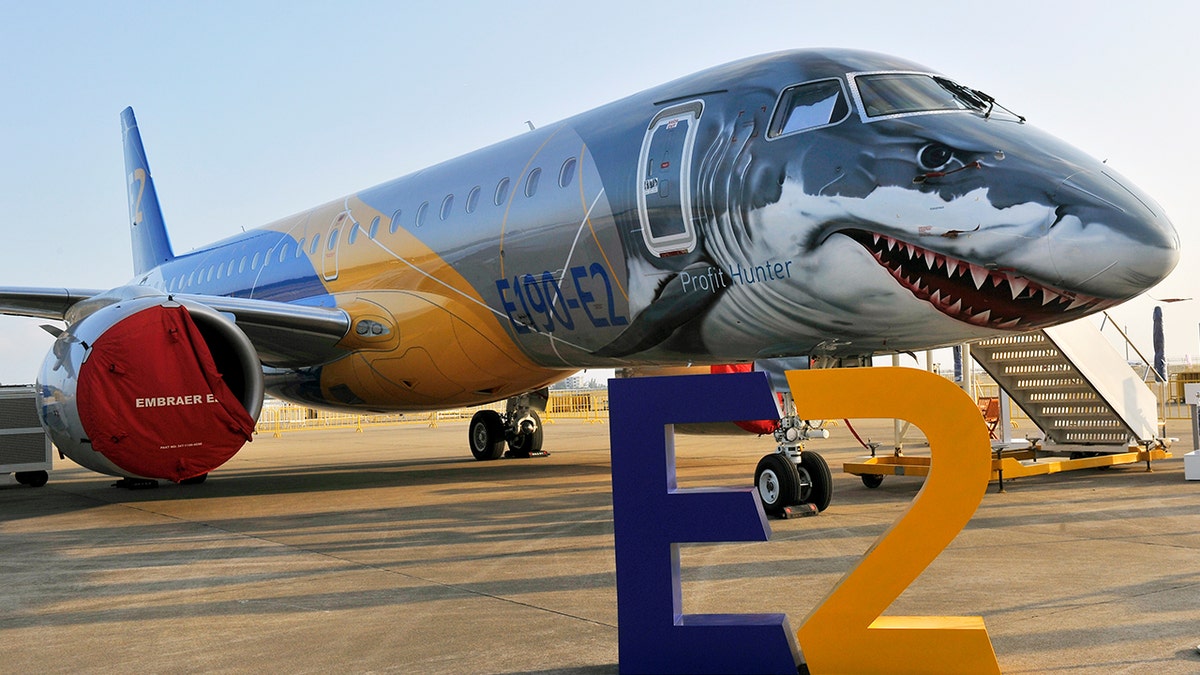
Brazilian aircraft manufacturer Embraer has debuted a fleet of passenger jets without those always annoying middle seats. (Getty)
This airplane aims to take the bite out of travel.
Brazilian aircraft manufacturer Embraer has debuted a fleet of passenger jets without those always annoying middle seats. The new E2 models feature two-by-two rows, meaning every passenger gets a window or an aisle seat — with no risk of getting crammed in between.
LIFE-SIZED REPLICA OF NOAH’S ARK WILL SAIL TO ISRAEL, SAYS DUTCH CARPENTER WHO BUILT IT
In addition to extra leg- and elbowroom, the planes also have 40 percent more space in the overhead bins, no under-seat rails, increased fuel efficiency, larger-framed windows, reduced emissions and, most visibly, tiger, eagle or white shark decals on their snouts, CNN Travel first reported.

The new E2 models feature two-by-two rows, meaning every passenger gets a window or an aisle seat — with no risk of getting crammed in between. (Getty)
Nicknamed the “Profit Hunter” by Embraer, the planes are subject to each airline’s customization and also have premium cabins with even more room thanks to staggered seats.
FOLLOW US ON FACEBOOK FOR MORE FOX LIFESTYLE NEWS
These beastly vehicles are barely off the ground but they’re already soaring on Instagram as they tour the world. The fierce nose designs make for a photogenic shot, but company executives are banking on the increased personal space making the E2s a more ferocious fighter against competitor Airbus’ A220.

The planes also have 40 percent more space in the overhead bins, no under-seat rails, increased fuel efficiency, larger-framed windows, reduced emissions and, most visibly, tiger, eagle or white shark decals on their snouts. (Getty)
The E2s are currently being flown by Scandinavian Airlines’ regional subsidiary Widerøe, as well as by SkyWest affiliates, including American Airlines, Delta, United and Alaska Airlines.
